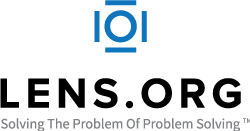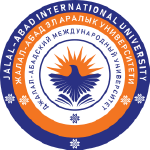Survival vs. Recurrence of Supratentorial Meningioma After Surgical Resection: Prognostic Impact of Simpson Grade in Adults Aged
DOI:
https://doi.org/10.63666/ejsmr.1694-9013.2.I.2025.28Keywords:
Supratentorial meningioma, prognostic factors, Simpson grade, surgical resection, recurrenceAbstract
Background: Supratentorial meningiomas, accounting for a significant proportion of intracranial tumors in adults, are primarily managed through surgical resection. The Simpson grading system, a historical standard, classifies the extent of resection and its impact on recurrence and survival. This PRISMA-2020 compliant systematic literature review (SLR) investigates the prognostic role of Simpson grade on recurrence, overall survival (OS), progression-free survival (PFS), and quality of life (QOL) in adults aged 18–60, while comparing it with other factors such as tumor size, WHO grade, Ki-67 index, peritumoral edema, tumor location, and adjuvant radiotherapy (RT).
Methods: PubMed, Google Scholar, and Cochrane databases were searched for studies published between 2019 and 2024. Inclusion criteria encompassed cohort studies of adults aged 18–60 with supratentorial meningioma treated by surgical resection, reporting outcomes of recurrence, OS, PFS, or QOL. Exclusions included case reports, series with fewer than 10 patients, pediatric (<18), elderly-only (>60), or infratentorial/skull base-only cohorts. Data on study characteristics, prognostic factors, and outcomes were extracted. Narrative synthesis was performed due to heterogeneity; meta-analysis was not feasible.
Results: From 120 identified records, 5 studies (n=1,250 patients) were included. Simpson grades I/II were associated with lower recurrence rates (hazard ratio [HR] 2.0–2.5) and improved PFS (median 86–92 vs. 60–70 months for grades III–V). WHO grades II/III and Ki-67 >5% were stronger predictors of recurrence in multivariate analyses. Limited QOL data indicated improved seizure control with complete resection. Adjuvant RT enhanced PFS in incomplete resections. OS differences were minimal in low-grade tumors.
Conclusion: Simpson grade remains a significant prognostic factor for recurrence and PFS, but its impact is modulated by tumor biology. This SLR provides evidence-based insights, contrasting narrative reviews by focusing on recent, population-specific data. Future studies should integrate molecular markers and standardized QOL metrics for enhanced prognostication.
References
1. Ostrom, Q. T., Cioffi, G., Gittleman, H., Patil, N., Waite, K., Kruchko, C., & Barnholtz-Sloan, J. S. (2019). CBTRUS Statistical Report: Primary Brain and Other Central Nervous System Tumors Diagnosed in the United States in 2012–2016. Neuro-Oncology, 21(Supplement_5), v1–v100. https://doi.org/10.1093/neuonc/noz150
2. Buerki, R. A., Horbinski, C. M., Kruser, T., Horowitz, P. M., James, C. D., & Lukas, R. V. (2018). An overview of meningiomas. Future Oncology, 14(21), 2161–2177. https://doi.org/10.2217/fon-2018-0006
3. Goldbrunner, R., Stavrinou, P., Jenkinson, M. D., Sahm, F., Mawrin, C., Weber, D. C., ... & Minniti, G. (2021). EANO guideline on the diagnosis and management of meningiomas. Neuro-Oncology, 23(11), 1821–1834. https://doi.org/10.1093/neuonc/noab150
4. Simpson, D. (1957). The recurrence of intracranial meningiomas after surgical treatment. Journal of Neurology, Neurosurgery, and Psychiatry, 20(1), 22–39. https://doi.org/10.1136/jnnp.20.1.22
5. Nanda, A., Bir, S. C., Maiti, T. K., Konar, S. K., Missios, S., & Guthikonda, B. (2017). Relevance of Simpson grading system and recurrence-free survival after surgery for World Health Organization Grade I meningioma. Journal of Neurosurgery, 126(1), 201–211. https://doi.org/10.3171/2016.1.JNS151842
6. Louis, D. N., Perry, A., Wesseling, P., Brat, D. J., Cree, I. A., Figarella-Branger, D., ... & Ellison, D. W. (2021). The 2021 WHO Classification of Tumors of the Central Nervous System: A summary. Neuro-Oncology, 23(8), 1231–1251. https://doi.org/10.1093/neuonc/noab106
7. Rogers, L., Barani, I., Chamberlain, M., Kaley, T. J., McDermott, M., Raizer, J., ... & Vogelbaum, M. A. (2015). Meningiomas: Knowledge base, treatment outcomes, and uncertainties. A RANO review. Journal of Neurosurgery, 122(1), 4–23. https://doi.org/10.3171/2014.7.JNS131644
8. Rogers, L., Zhang, P., Vogelbaum, M. A., Perry, A., Ashby, L. S., Modi, J. M., ... & Mehta, M. P. (2018). Intermediate-risk meningioma: Initial outcomes from NRG Oncology RTOG 0539. Journal of Neurosurgery, 129(1), 35–47. https://doi.org/10.3171/2016.11.JNS161170
9. Schneider, M., Güresir, Á., Borger, V., Hamed, M., Rácz, A., Vatter, H., Güresir, E., & Schuss, P. (2019). Preoperative tumor-associated epilepsy in patients with supratentorial meningioma: Factors influencing seizure outcome after meningioma surgery. Journal of Neurosurgery, 132(6), 1835–1841. https://doi.org/10.3171/2019.7.JNS19433
10. Zamanipoor Najafabadi, A. H., van der Meer, P. B., Boele, F. W., Taphoorn, M. J. B., Klein, M., van Zandvoort, M. J. E., & Dirven, L. (2021). Determinants and predictors of health-related quality of life in meningioma patients: A systematic review. Neuro-Oncology Practice, 8(4), 389–400. https://doi.org/10.1093/nop/npab023
11. Page, M. J., McKenzie, J. E., Bossuyt, P. M., Boutron, I., Hoffmann, T. C., Mulrow, C. D., ... & Moher, D. (2021). The PRISMA 2020 statement: An updated guideline for reporting systematic reviews. BMJ, 372, n71. https://doi.org/10.1136/bmj.n71
12. Nowak-Choi, K., Palmer, J. D., Casey, J., Chitale, A., Kalchman, I., Buss, E., Tzeng, S., Venur, V., & Patil, C. (2021). Resected WHO grade I meningioma and predictors of local control. Journal of Neuro-Oncology, 151(2), 307–313. https://doi.org/10.1007/s11060-020-03688-1
13. Gadot, R., Khan, A. B., Patel, R., Goethe, E., Shetty, A., Hadley, C. C., ... & Patel, A. J. (2021). Predictors of postoperative seizure outcome in supratentorial meningioma. Journal of Neurosurgery, 137(2), 515–524. https://doi.org/10.3171/2021.9.JNS211738
14. Spille, D. C., Adeli, A., Sporns, P. B., Hess, K., Streckert, E. M. S., Brokinkel, C., ... & Brokinkel, B. (2022). Predicting the risk of postoperative recurrence and high-grade histology in patients with intracranial meningiomas using routine preoperative MRI. Acta Neurochirurgica, 164(8), 2189–2198. https://doi.org/10.1007/s00701-022-05240-8
15. Driver, J., Weber-Levine, C., Mirchia, K., Hayat, H., Fiester, P. J., Jones, J. L., ... & Tavanaiepour, D. (2024). Molecular classification to refine surgical and radiotherapeutic decision-making in meningioma. Nature Medicine, 30, 1947–1957. https://doi.org/10.1038/s41591-024-03167-4
16. Benz, L. S., Wrenger, M. R., Weinberg, J. S., Noll, K. R., & Wefel, J. S. (2023). Neurocognitive outcomes in patients with intracranial meningiomas. Current Oncology Reports, 25, 149–157. https://doi.org/10.1007/s11912-022-01346-4
Downloads
Published
Issue
Section
License
Copyright (c) 2025 Eurasian Journal of Scientific and Multidisciplinary Research

This work is licensed under a Creative Commons Attribution-NonCommercial-NoDerivatives 4.0 International License.












